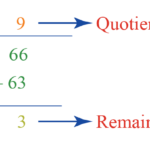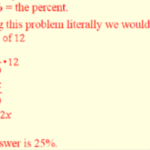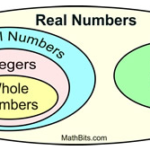What is the meaning of Place Value and Face Value in Maths Difference Between Face Value And Place Value Place value and face value: The place value of a digit of a number depends upon its position in the number. The face value of a digit of a number does not depend upon its position in the number. It always remains the same wherever it lies regardless of the place it … [Read more...] about What is the meaning of Place Value and Face Value in Maths
Pre Algebra
What Are The Four Basic Operations In Mathematics
OPERATIONS ON NUMBERS Addition Addition of two or more numbers gives us another number. The numbers which are added are called addends and the new number thus obtained is called the sum. For example, 34670 + 12345 = 47015 Here, 34670 and 12345 are called addends and 47015 is called the sum of 34670 and 12345. Large numbers are added in the same way as the small … [Read more...] about What Are The Four Basic Operations In Mathematics
Hints for Remembering the Properties of Real Numbers
Hints for Remembering the Properties of Real Numbers Commutative Property - interchange or switch the elements Example shows commutative property for addition: X + Y = Y + X Think of the elements as "commuting" from one location to another. "They get in their cars and drive to their new locations." This explanation will help you to remember that the elements are "moving" … [Read more...] about Hints for Remembering the Properties of Real Numbers
Percents
Percents Percents are used to describe parts of a whole base amount. When one of the parts of the relationship is unknown, we can solve an algebraic equation for the unknown quantity. (The solution methods shown on this page are of an algebraic, sentence translation nature. Of course, other methods of solution are also possible.)There are two main types of problems … [Read more...] about Percents
Rational and Irrational Numbers
Rational and Irrational Numbers Both rational and irrational numbers are real numbers.This Venn Diagram shows the relationships between sets of numbers. Notice that rational and irrational numbers are contained in the large blue rectangle representing the set of Real Numbers. Rational Numbers A rational number is a number that can be expressed as a fraction or … [Read more...] about Rational and Irrational Numbers




